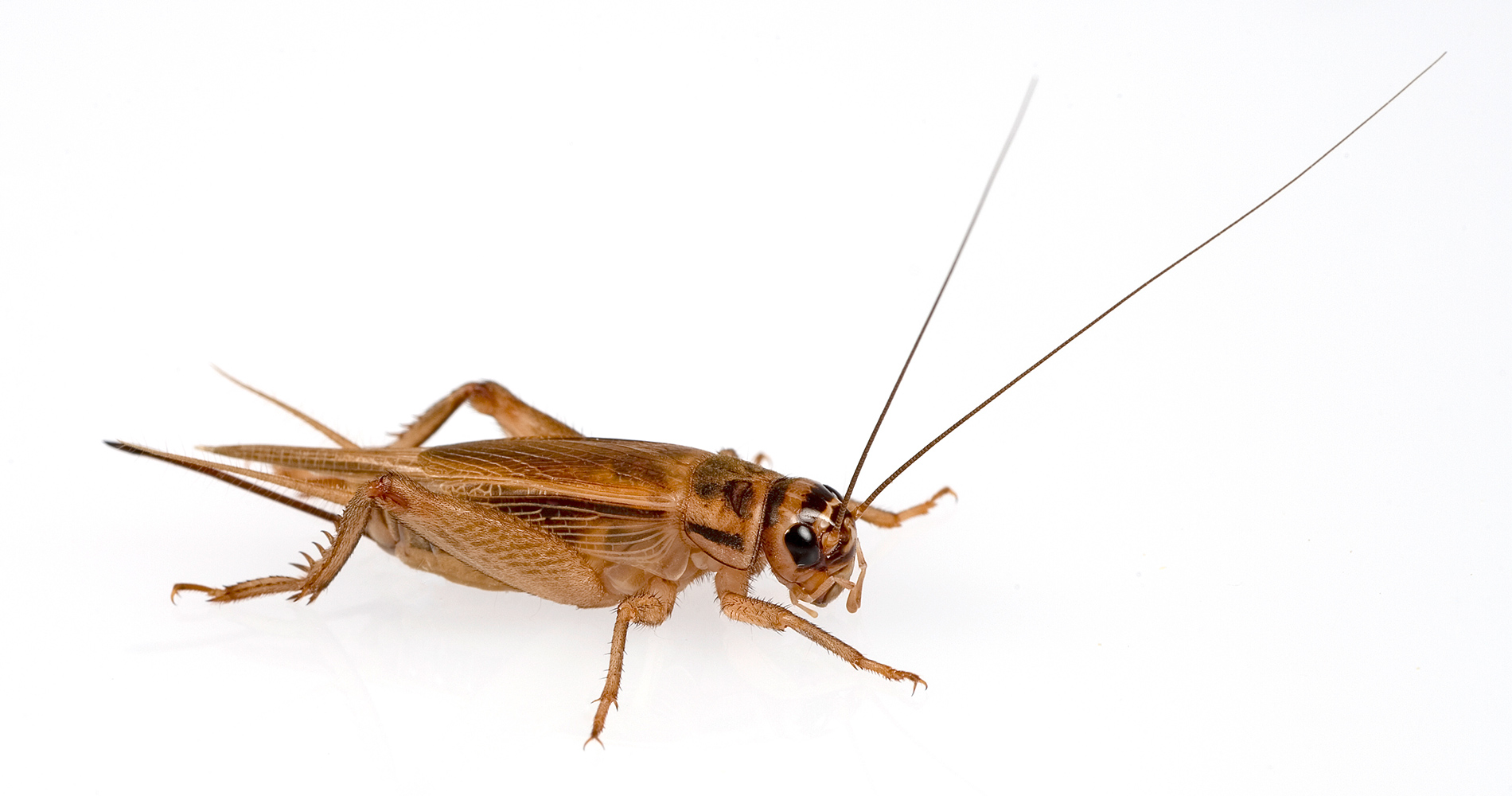House cricket
(Acheta domesticus)

Biology:
The house cricket is a bush cricket, which is a member of the true crickets family (fam. Gryllidae). When the creatures are fully grown, they have wings which are up to 20 mm long. They have long antennae and are yellowish with dark brown markings. These creatures are very thermophilic and can often be found in kitchens, boiler rooms, bakeries, breweries, etc. Outdoors, you can find them at waste disposal sites. They hide in the day and look for food at night. They are omnivores but prefer a plant-based diet. When they move quickly, they can also jump a little. They are characterised by the chirping noise that the males make to attract the females in the dark. House crickets are very popular feed insects for animals in terrariums.
Damage:
House crickets have a very similar lifestyle and diet to cockroaches. As a result, the damage that they cause is comparable. They therefore contaminate foodstuffs and can transmit germs. People can also find the constant chirping very annoying.
